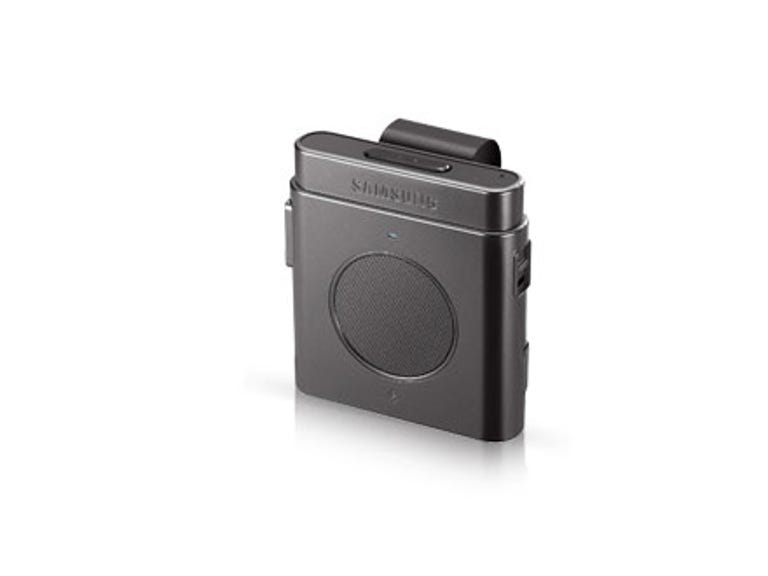 Why You Can Trust CNET
Why You Can Trust CNET Samsung HKT600 review: Samsung HKT600
Beauty is much more than skin deep. Samsung's Bluetooth speaker won't visually impress, but it's a great in-car speaker otherwise.
The Good
The Bad
The Bottom Line
Design
The HKT600 doesn't mess around trying to look pretty — we're looking at you, Sudio Vogue — or, for that matter trying to be anything that could reasonably be described as discrete. It's a big, solid boxy Bluetooth speaker designed primarily for pairing with your mobile phone in the car. You could pair it with a compatible laptop or other device, but the fact that Samsung ships it with only an in-car charger rather points to the usage model for this particular speaker.
You could argue that the HKT600's design has "industrial chic" if you wished. Or you could look at it and suspect that it served some time as a classic Dr Who prop. Our thoughts tended towards the latter, if we're being honest. It's certainly a solid unit, which is no bad thing for something that's likely to be knocking around in your car. A very solid clip is permanently stuck to the back of the HKT600, which makes it uncomfortable in a pocket but easy to clip to your sun visor.
Features
The HKT600 is a Bluetooth 2.0 EDR compliant speakerphone with an astonishingly simple feature set. Down one side you'll find a volume wheel — an actual physical wheel, rather than a rocker button or anything of the type, further cementing the HKT600's rather retro styling. The right-hand side houses a solid power button and the top has a simple multifunction button that gets used for everything else.
Performance
Initial pairing was exceptionally smooth, and we quickly paired the HKT600 with a variety of phones. For testing, we predominantly used the Nokia 5800 XpressMusic phone.
On a physical level, there's a lot to like about the HKT600's design in practical use terms. The clip is very solid and wouldn't budge from our sun visor easily. The use of switches and wheels, rather than soft buttons makes it easy to change volume and start the HKT600 up. The fact that it uses a car charger only is something of a drawback depending on where your car's charger is. It would understandably be a bad idea to trail the cable from your dash up to the sun visor, although if you've got a newer mobile phone with a micro USB charger, you could always pre-charge the HKT600. We're left wondering why a micro USB charger — or at least a PC-compatible cable — wasn't included in the kit.
The speaker within the HKT600 is functional enough for voice calls and just about bearable for music, in a "listening to AM radio in the mid 1970s" kind of way. If you are of the antisocial-blare-music-out-on-the-train brigade, you'd probably find the HKT600's top volume a little low.
The single button approach that the HKT600 uses isn't uncommon in hands-free speakerphones, although the placement of the button at the top of the speaker and the unclear instructions within the manual had us scratching our heads for a while. Basic simple phone answering and hanging up is simple enough, but more complex tasks such as voice calls or switching between multiple calls involves different length presses, and it took us some practice before we got it down pat.


